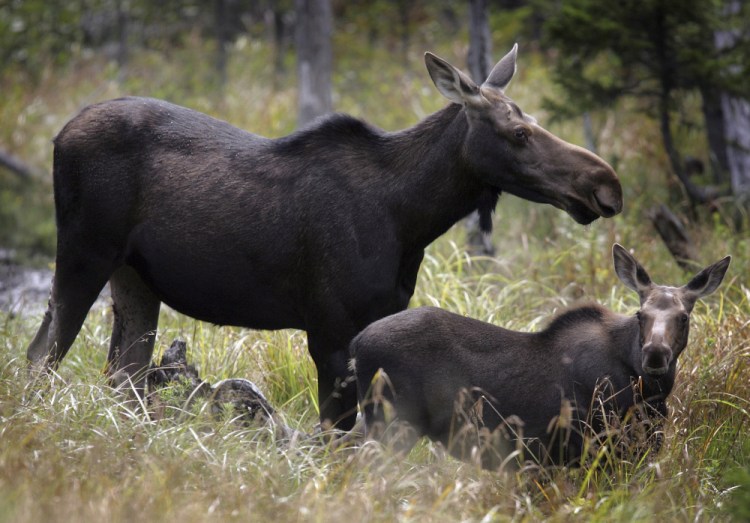CONCORD, N.H. — In the battle between ticks and moose, the blood-sucking insects seem to have the upper hand.
Preliminary numbers from a project earlier this year in New Hampshire that put tracking collars on at least 36 calves are not encouraging. They show nearly 75 percent of the calves have died from ticks.
Moose biologist Kristine Rines said it’s the second straight year of a high mortality rate for moose calves.
“It doesn’t bode well for moose in the long term if we continue to have these short winters,” she said.
The ticks are dependent on a combination of shorter winters and moose density.
“As our moose numbers decline, the ticks will decline, as well,” Rines added. “What we don’t know is at what point will things level off.”
Last year, 20 of 27 moose calves tagged by state biologists had died by late April in New Hampshire, compared to 13 of 22 in 2014.
The tagging project in New Hampshire and Maine is part of a six-year moose mortality study that began in 2014. Biologists in New Hampshire and Maine are teaming up to help determine why moose populations in the region are declining.
Moose calf mortality in Maine, which has the largest moose population in the continental United States with an estimated 60,000 to 70,000 animals, dropped last year from 73 percent to 60 percent. Adult moose did even better, with mortality falling from 33 percent to 8 percent in that time. Biologists said that was encouraging, but that winter ticks are still a problem with regard to moose deaths.
Vermont also has cited winter ticks contributing to moose mortality. There, biologists have been worried about how ticks affect moose as well, but the state hasn’t been participating in the tracking collar study. Nevertheless, Vermont has a lower moose density than New Hampshire and tick counts done on bull moose shot by hunters in the fall have been consistently lower than in New Hampshire and Maine, said Vermont moose biologist Cedric Alexander.
“We pay very close attention. We’re very interested and alarmed when we see that kind of mortality in a collared animal study next door,” he said.
The capture crew used net-guns and tranquilizer darts to capture the moose in northern New Hampshire so the animals could be collared. Blood and other samples were collected to help evaluate the health of the moose.
Preliminary numbers from Maine were not immediately available.
The collared animals are monitored for as long as the collars keep transmitting. When a moose dies, the collars transmit a special signal, allowing researchers to get there as soon as possible to determine the cause of death.
“We’ve got a long way to go before we’ve got specific answers, but we’re trying,” Rines said.
Send questions/comments to the editors.



